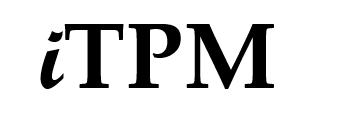Before we address some of the pros and cons of live trade promotion accruals for budgeting and tracking, let’s start with some definitions:
In Wikipedia, "Trade Promotion refers to marketing activities that are executed in retail between these two partners. Trade Promotion is a marketing technique aimed at increasing demand for products in retail stores based on special pricing, display fixtures, demonstrations, value-added bonuses, no-obligation gifts, and more."
I will add to this definition that Trade Promotion includes expenditures paid directly by a manufacturer or distributor to the trade or retailer in a given industry. Trade Promotion can be a percent discount from list price, an amount per unit, free goods, and it can be a fixed or lump-sum payment for in-store merchandising. Examples of Trade Promotion include slotting allowances, CMAs, performance allowances for displays, end-caps, etc., purchase allowances, samples, in-store demos, scan-down allowances, digital marketing and many more customer-specific deals. Trade promotion can be offered using several methods-of-payment, including off-invoice, bill-back, and net-bill.
Live accrual is typically defined as a rate per case or percent of revenue that’s 'earned' on everything that you sell in the current budget period. Think of this like a checkbook for trade promotion, where the accrual are deposits, and checks or deductions for trade promotion activities are withdrawals.
Example: You earn $1.50 per case on everything you sell. Through first quarter you sold 1,000 cases, generating $1,500. However, you spend $2,000 during the same time frame on scan downs, displays, etc. Based on your live accrual, you’re over spent by $500.
What are the alternatives to a live accrual for trade promotion budgeting and tracking?
Fixed budget: This is when you identify a specific amount to spend. Sometimes this is also called ‘gifted’. Example: $2,000 for a specific customer, product, and/or geographic region.
Historical Accrual: This is similar to a live accrual, with one twist. This is when your current trade promotion budget is based on what you earned in the previous budget period. Everything you earn in the current budget period funds trade promotion next year. Last year you sold 750 cases, and the rate last year was $1.20 per case, so you have $900 in this year’s trade promotion budget.
Live Accrual PLUS a fixed budget hybrid. This combines two trade promotion funding methodologies described above. Example: You earn $1.50 on every case you sell this year, PLUS you have an additional $10,000 to promote a new SKU that currently has little or no sales volume.
Event-based accruals: This approach is similar to zero-based budgeting. The trade promotion budget and earnings are based on approved trade promotions. You only earn funds based on what you sell during the approved promotion events. Lump-sums are typically accrued on the first day the promotion starts.
No budget or tracking: This can be thought of as a business that’s based on bids, where the business is awarded with a fixed price for a specific time-period. The contract profitability may be analyzed before the bid is submitted. However, once the bid is accepted, there is no ‘budget’ for the discounts in the bid contract. Another example of this is simply creating a customer specific price in your ERP. Once you change the list price for a customer, there's no tracking the difference between your List or Base price and the customer's price.
| Trade Promotion Budget Funding | Pros | Cons |
| Live Accrual | The more you sell, the more retail execution activities you can fund. If the sales are lower than expected, the budget automatically adjusts downward to maintain profitability. | Sometimes a product can’t generate enough funds in the current period to purchase the merchandising needed to grow the business, or maintain distribution. |
| Fixed Budget | Easy to communicate and track. | If actual sales are far greater or less than expected, the trade promotion budget doesn’t match reality. You’ve either allowed too much spending or too little. |
| Historical Accrual | This is used to prevent overspending, as the customer and sales person know exactly what trade funds are available when the budget periods starts. | The chicken and the egg challenge for new SKUs and customers. You need trade promotion to boost your sales, but you don’t have trade funds until your sales increase. |
| Hybrid: Live accrual PLUS Fixed Budget | This combines the best of both approaches, so that trade funding will grow (or shrink) with the business, but you’ll still be able to fund activities for products and customers where a live accrual doesn’t work. | It’s a little more complicated, and requires more effort to analyze and prepare for the next budget period. |
| Event-based accruals | The budget and accruals are specific to each product, customer and budget period. What is approved is the official budget and accrual. | The huge downside to this approach is this: The trade promotion MUST be in the system and approved BEFORE the promotion starts to have accurate accruals. No promotion in the system = no accrual = no budget = no future visibility. |
| No Budget or tracking | There is less work during the budget planning process, as there is essentially no budget for any direct reduction in list price, or dead-net pricing to the customer in the contract pricing. |
There is no direct tracking of the discounted price. There is no report to identify the on-going cost of the bid price or change to the customer's list price in the ERP. As Peter Drucker said, ‘You can't manage what you don't measure’. |
In our opinion, the hybrid approach works well for most CG manufacturers. It offers most of the benefits, with fewer of the cons.
Alex Ring, President
CG Squared, Inc.
